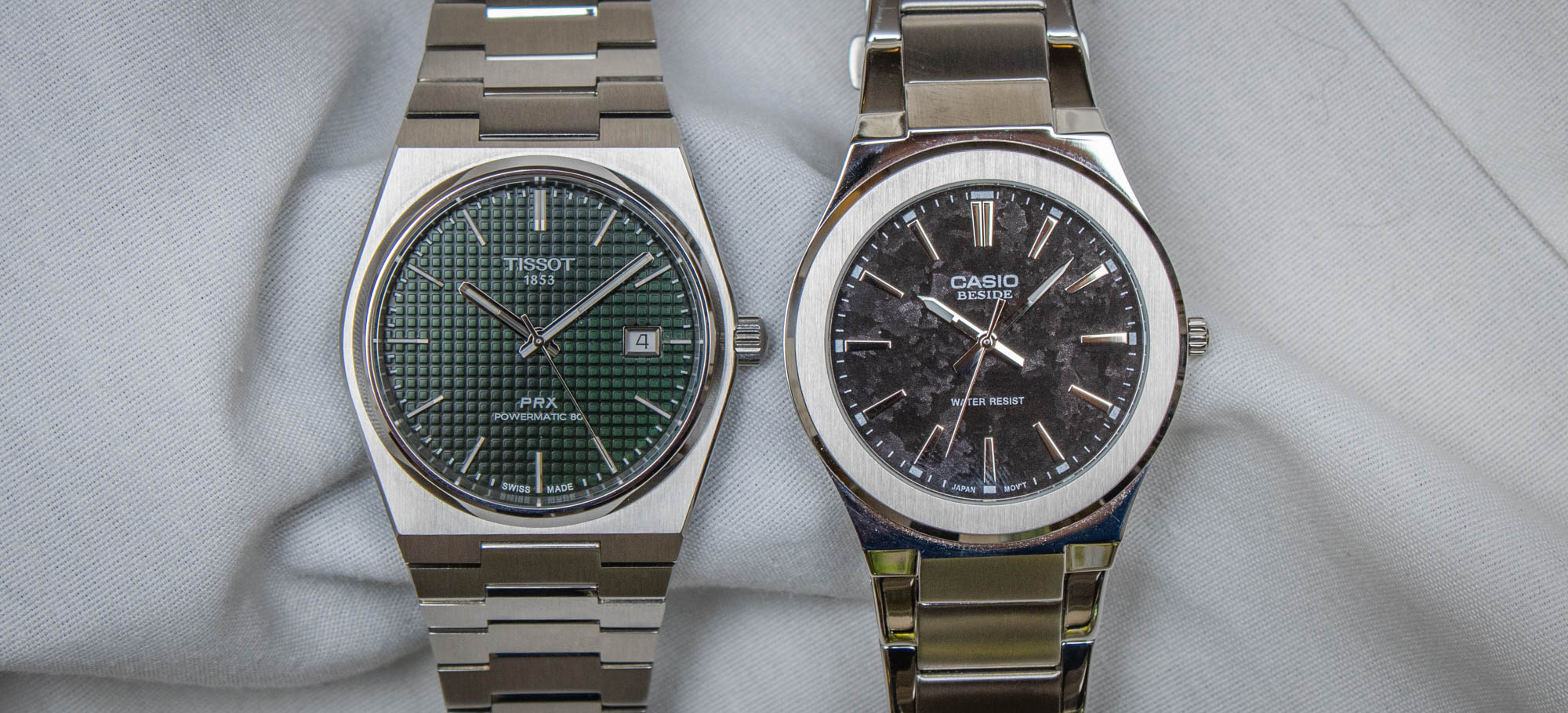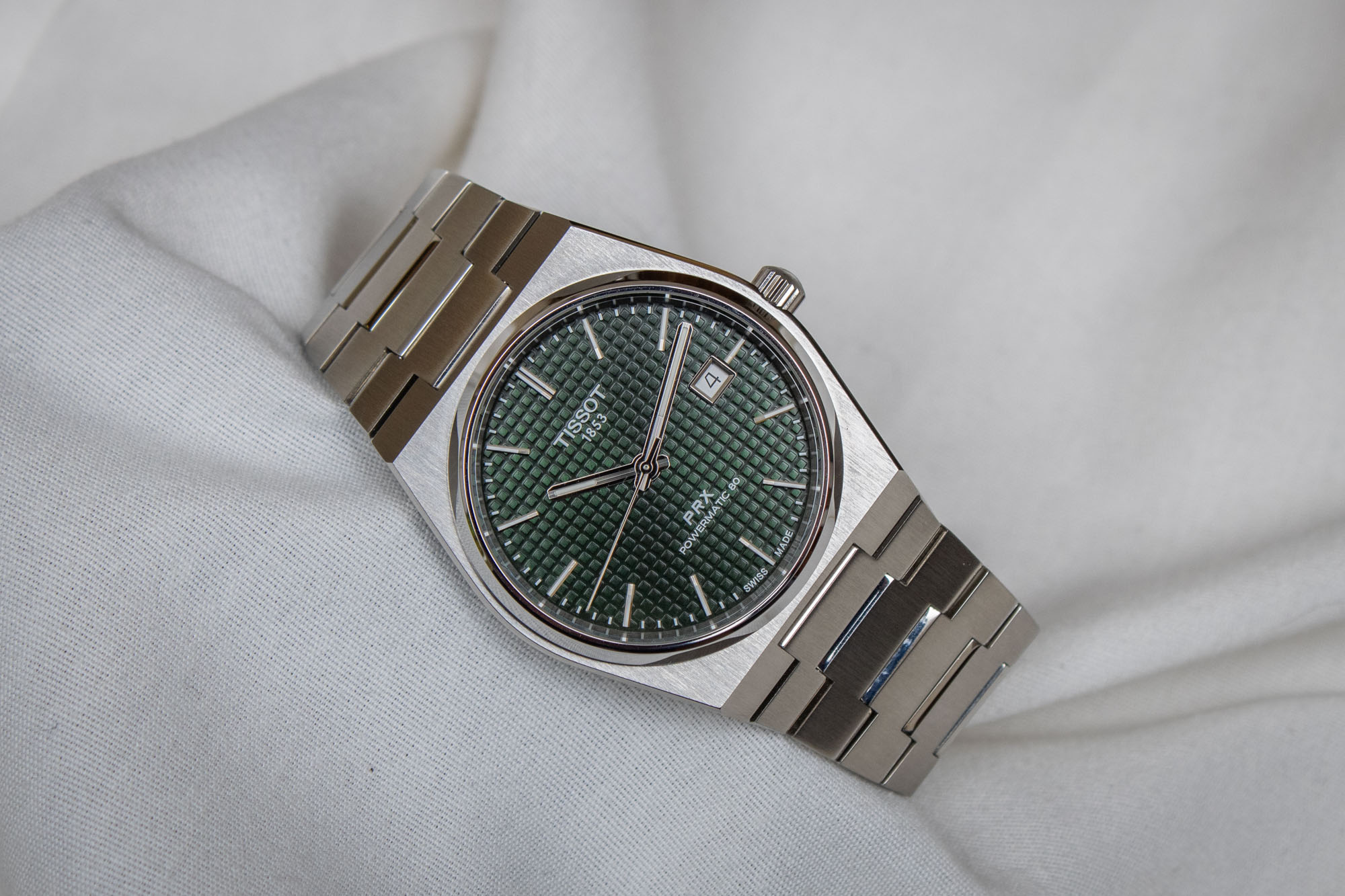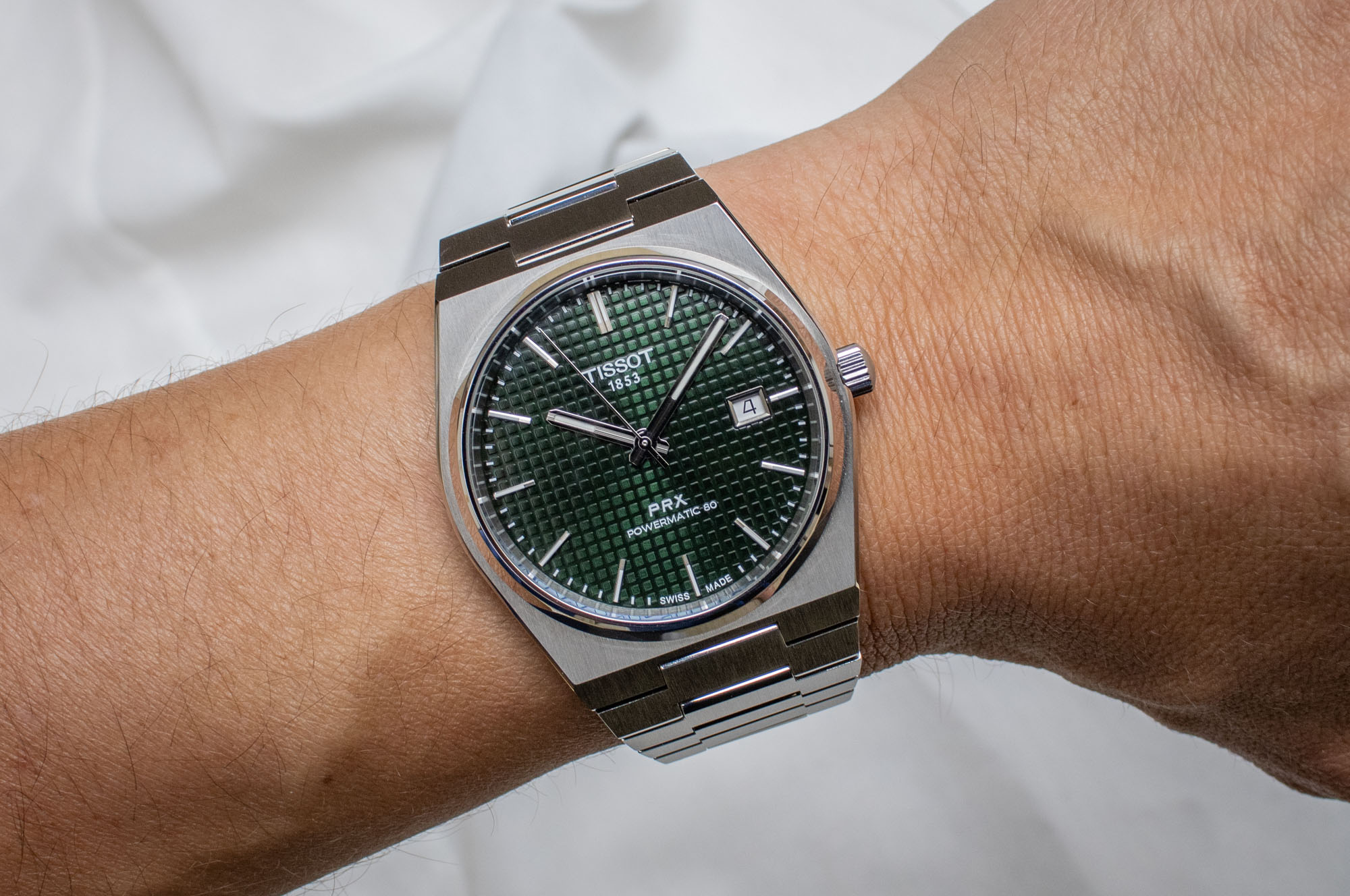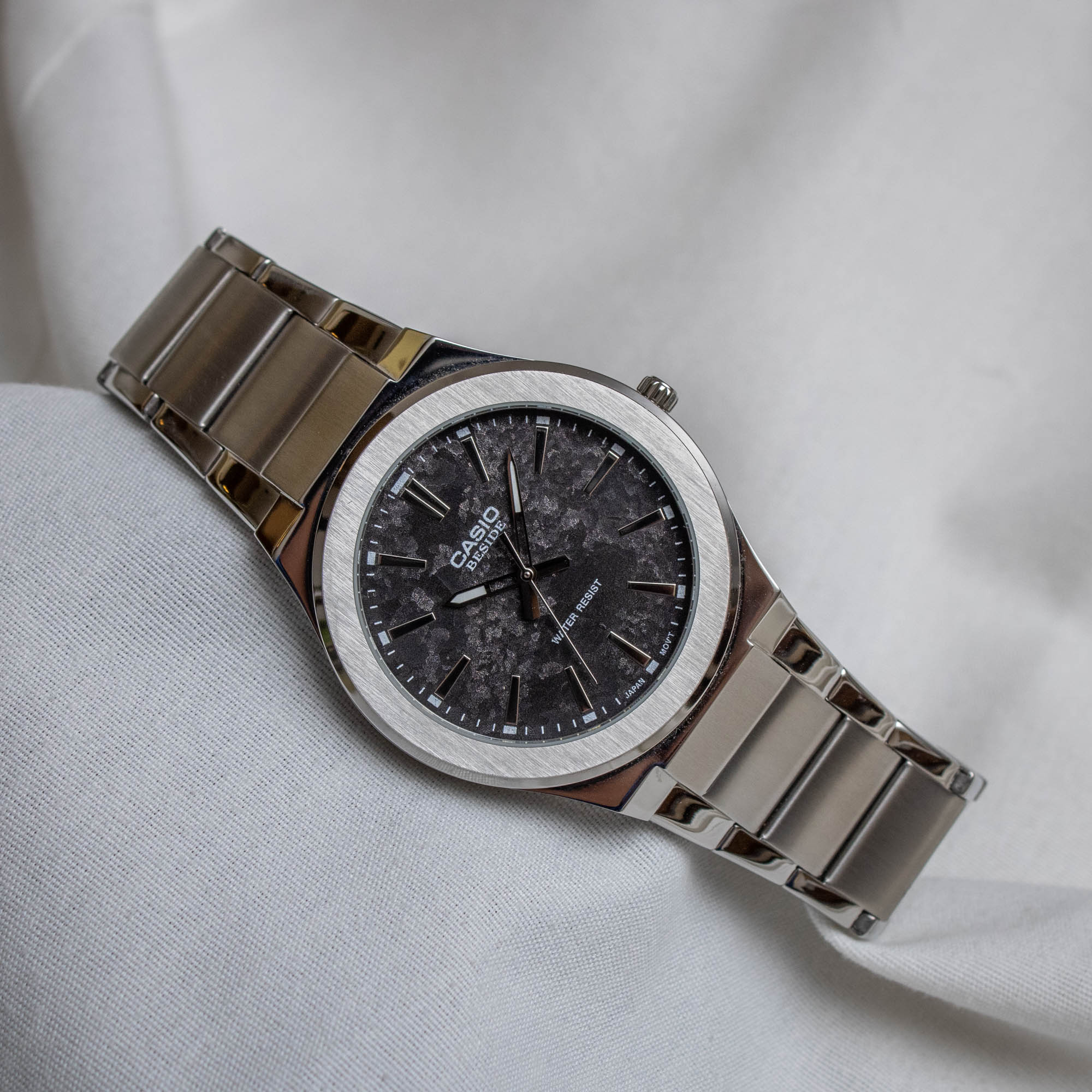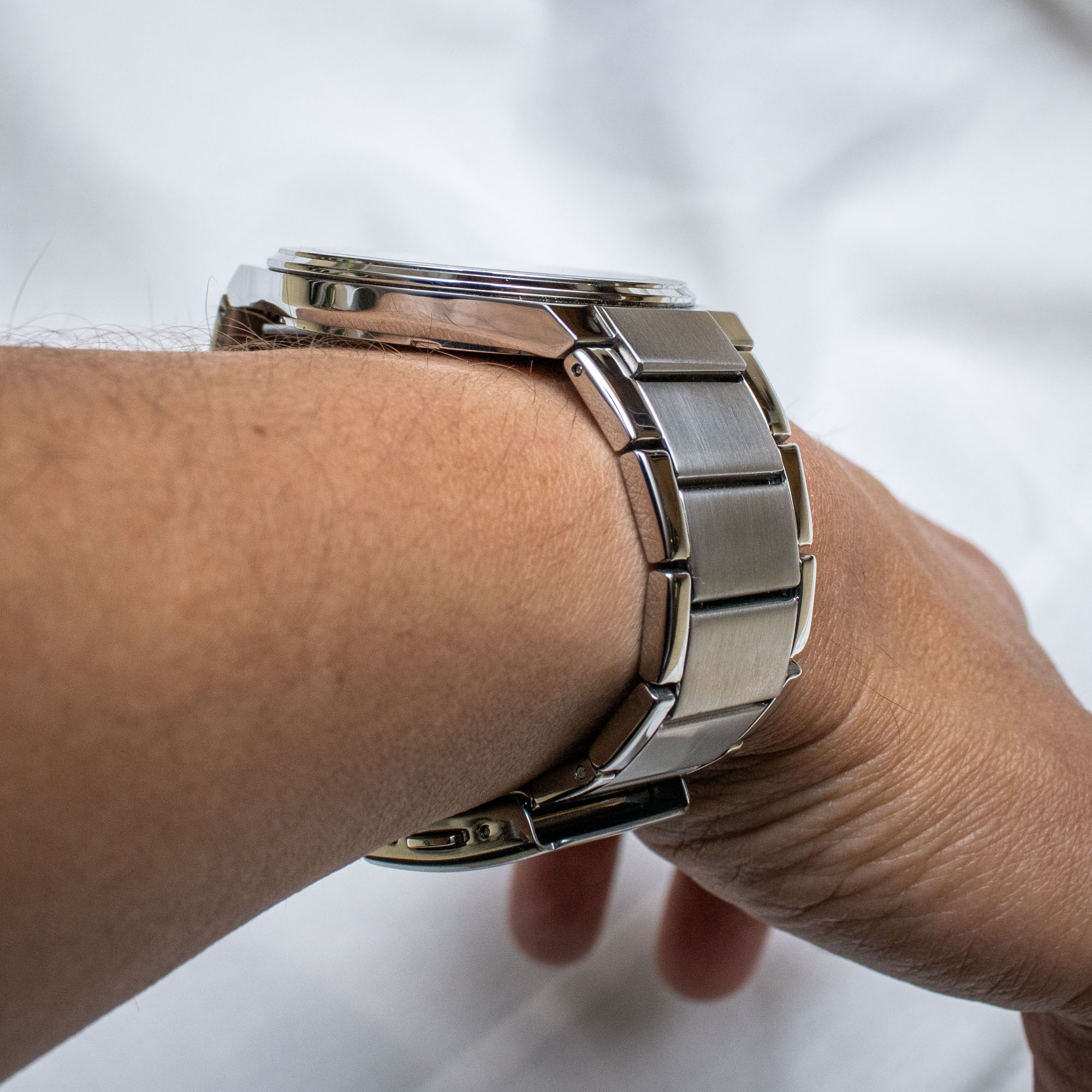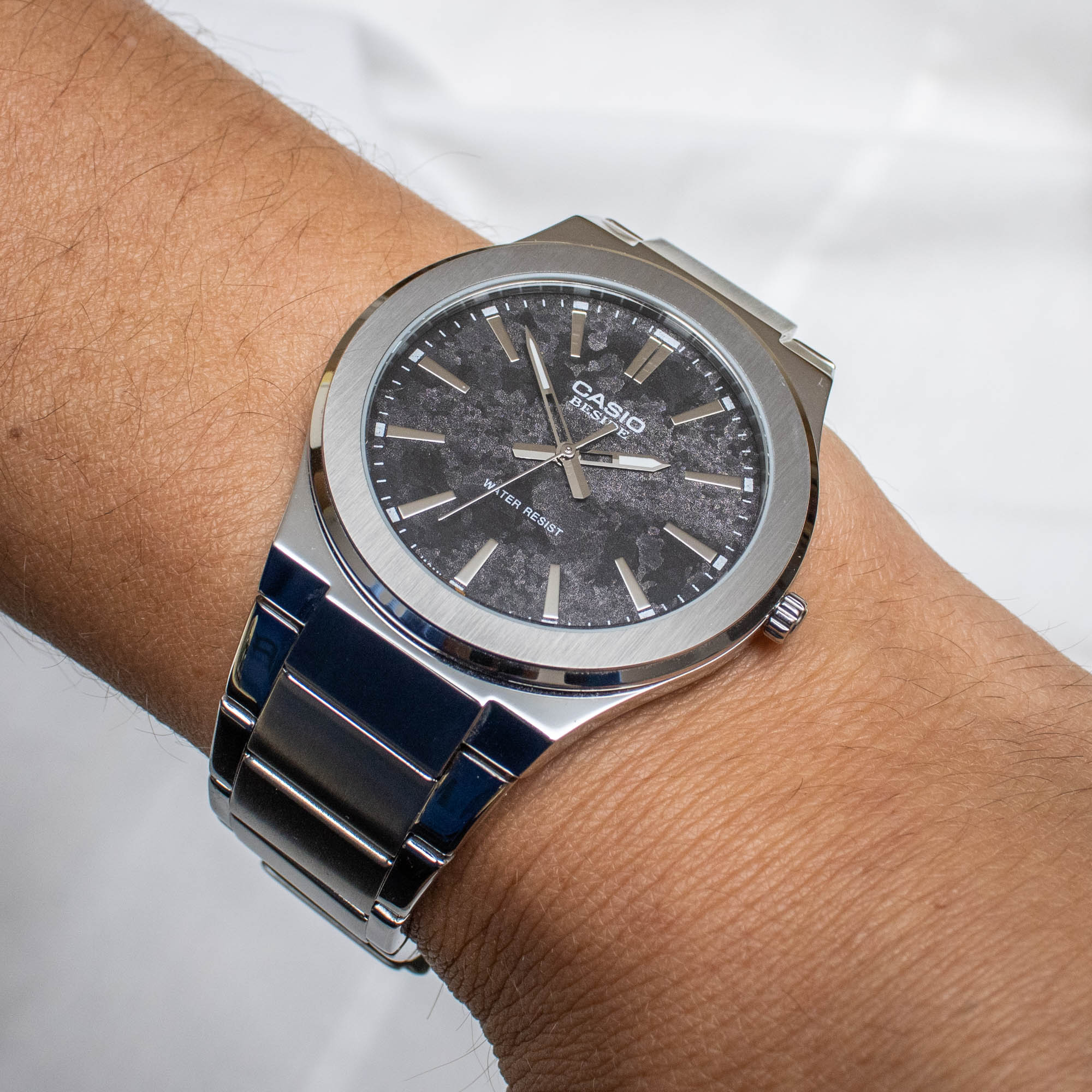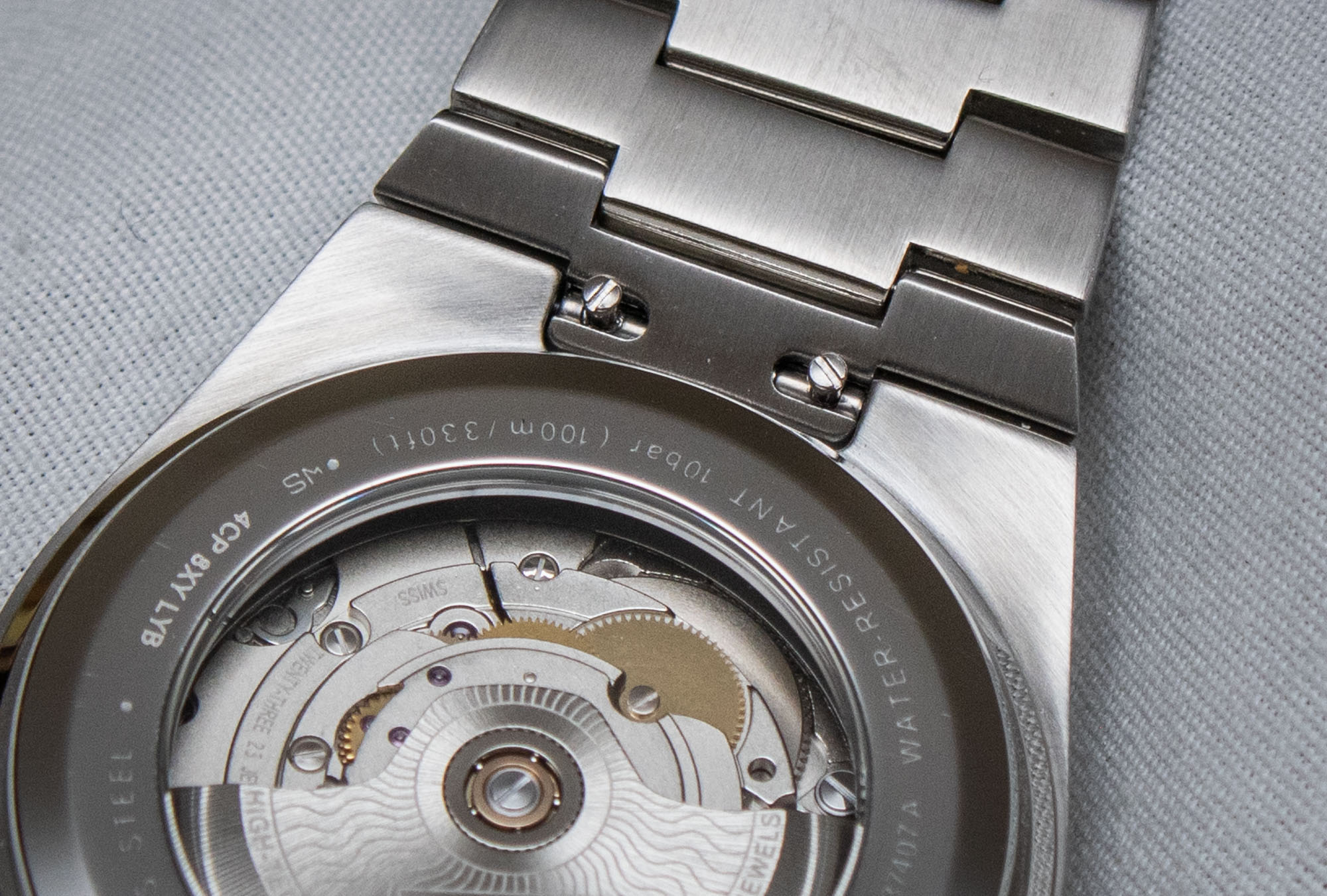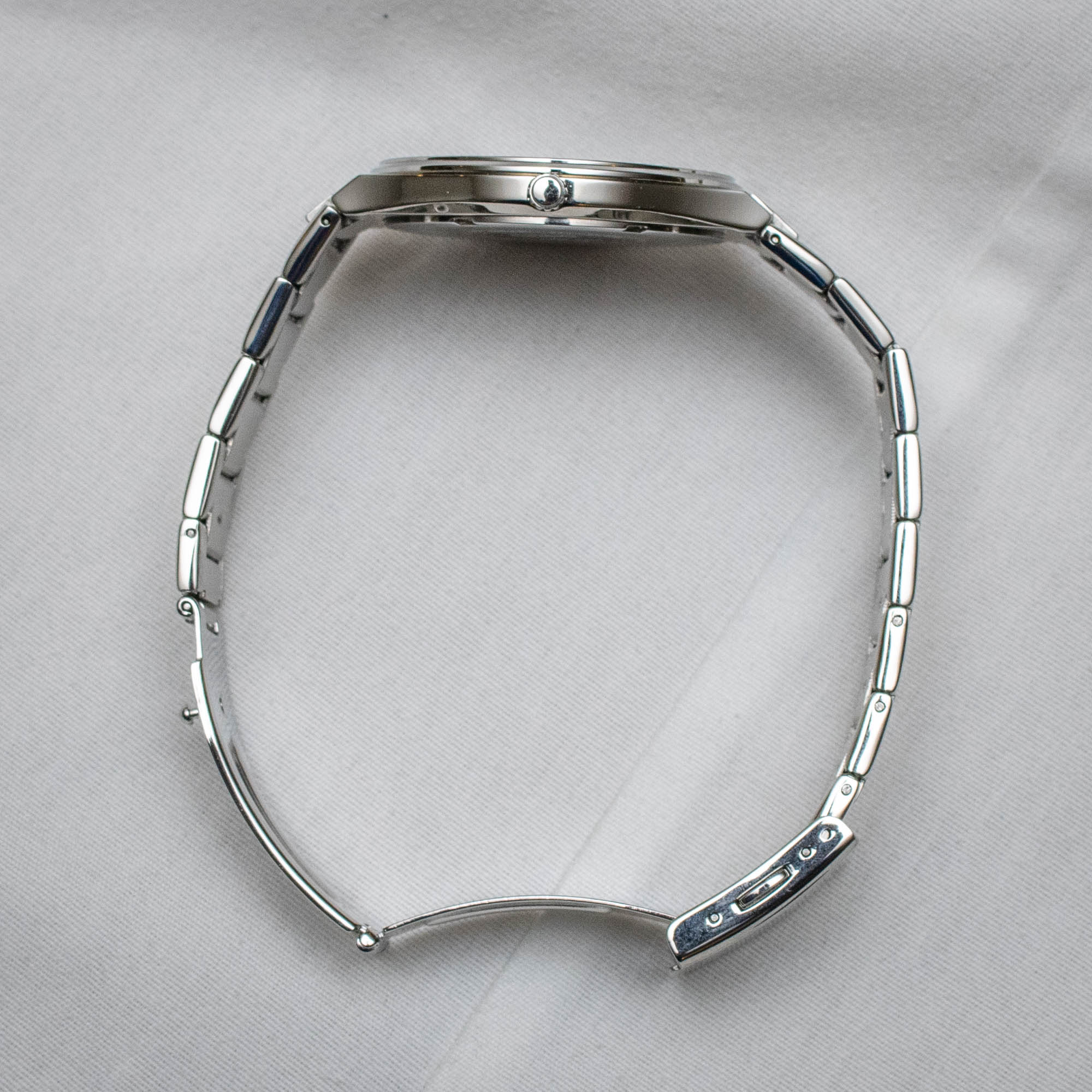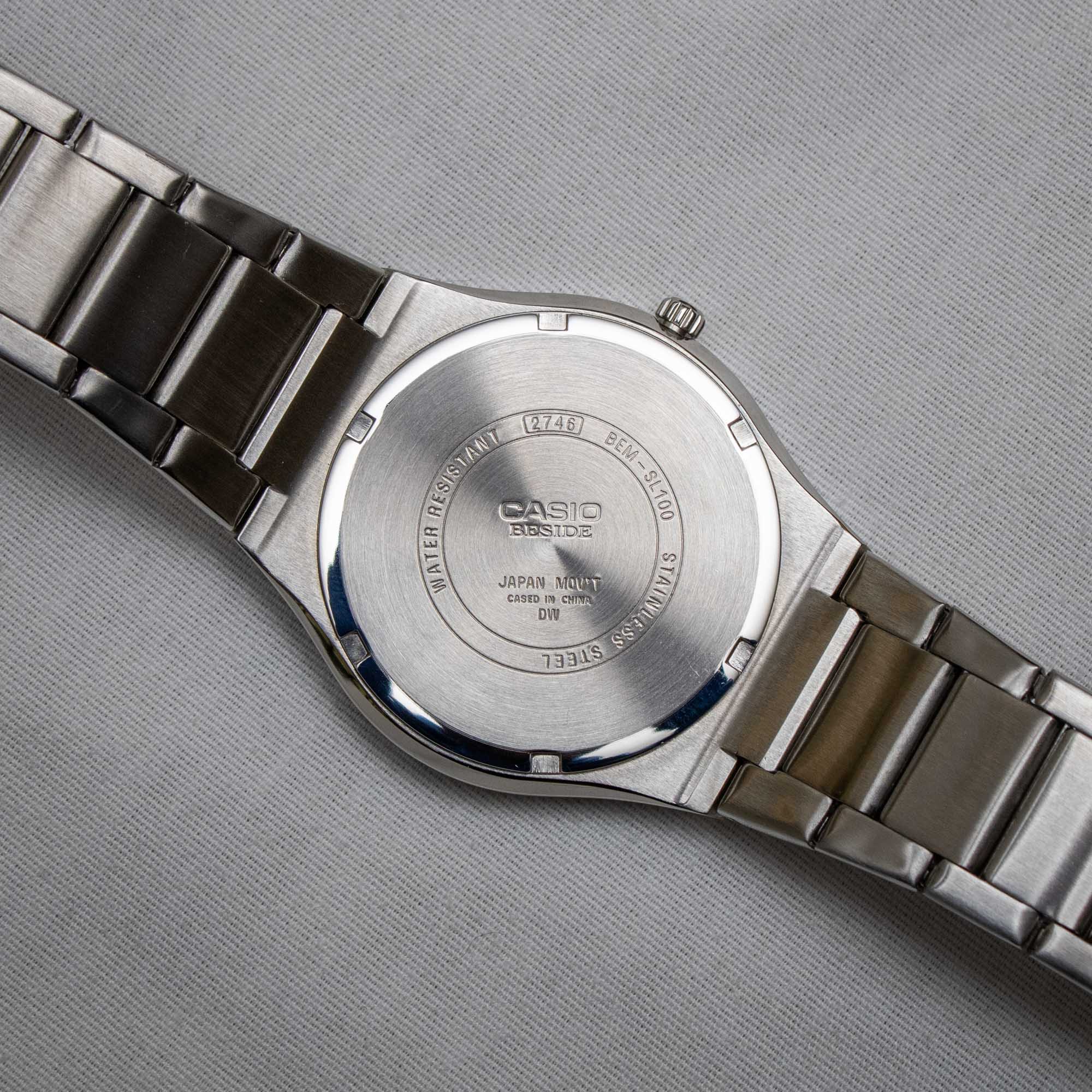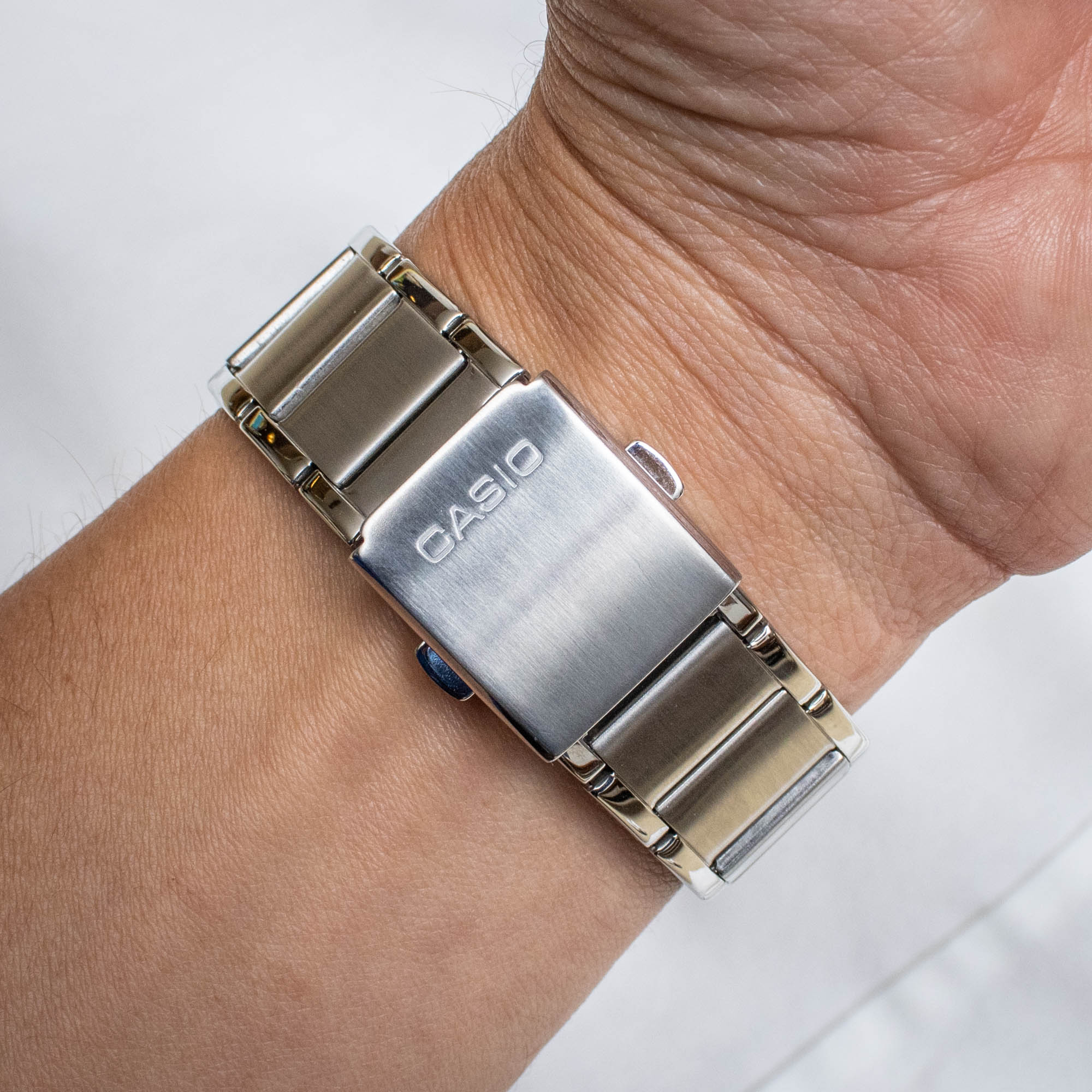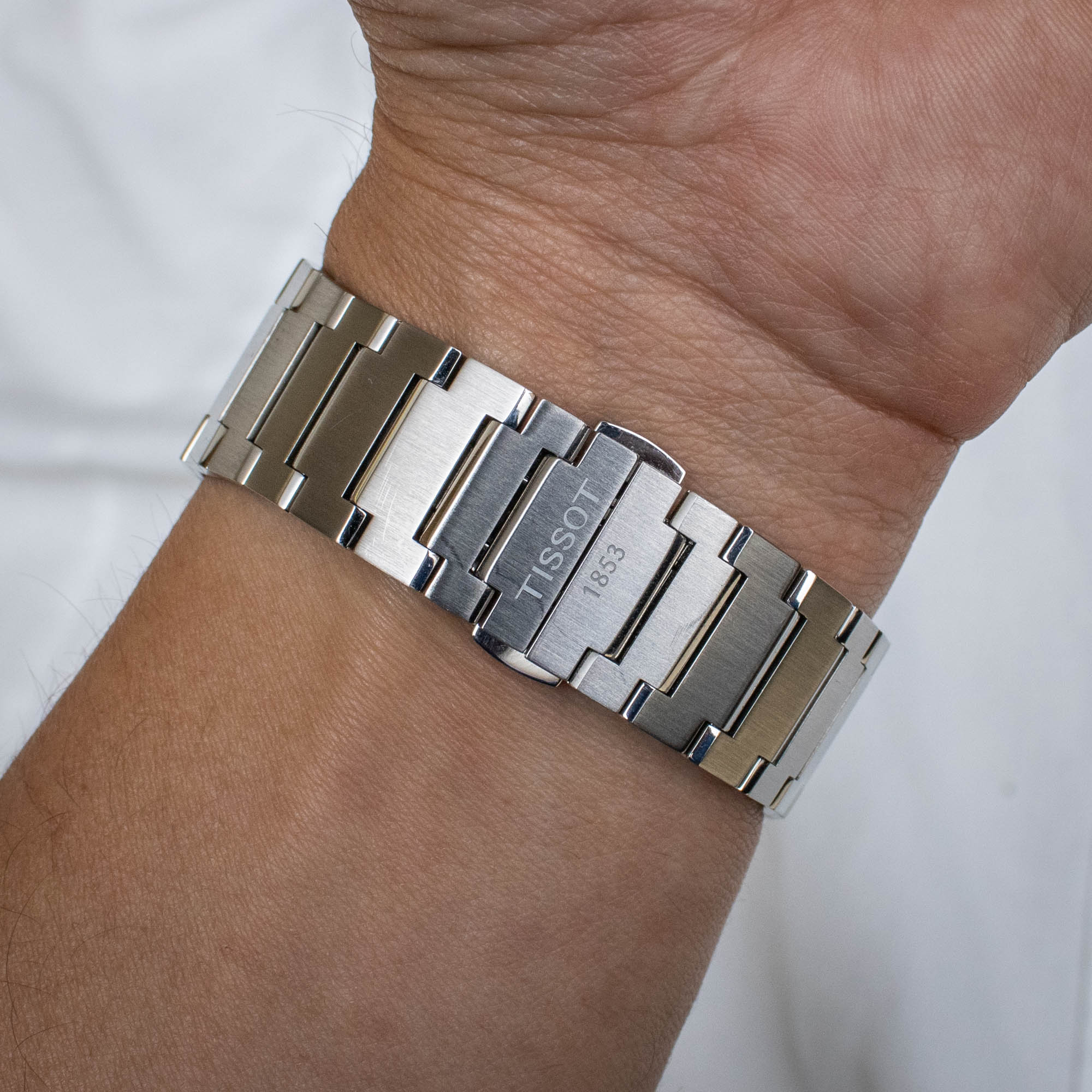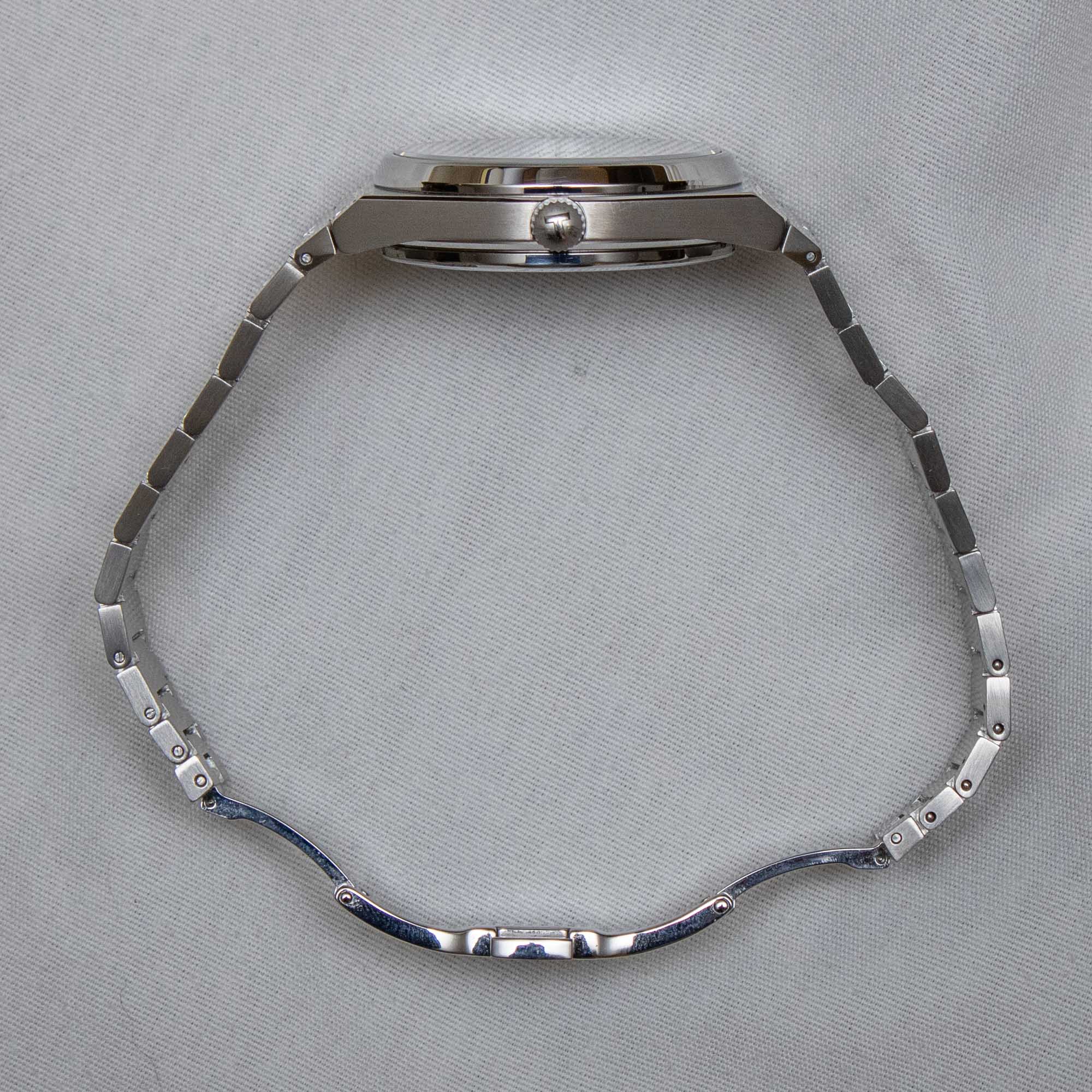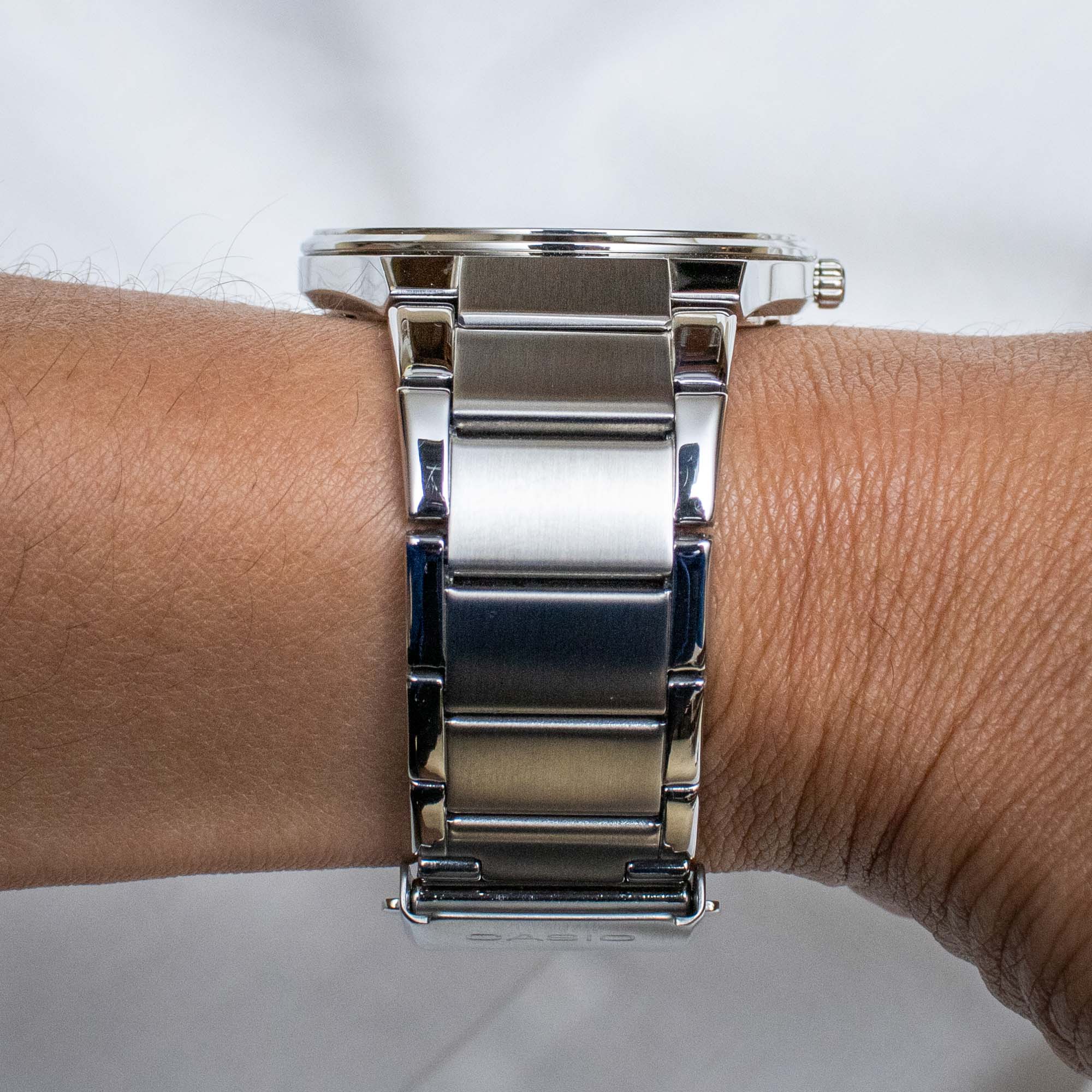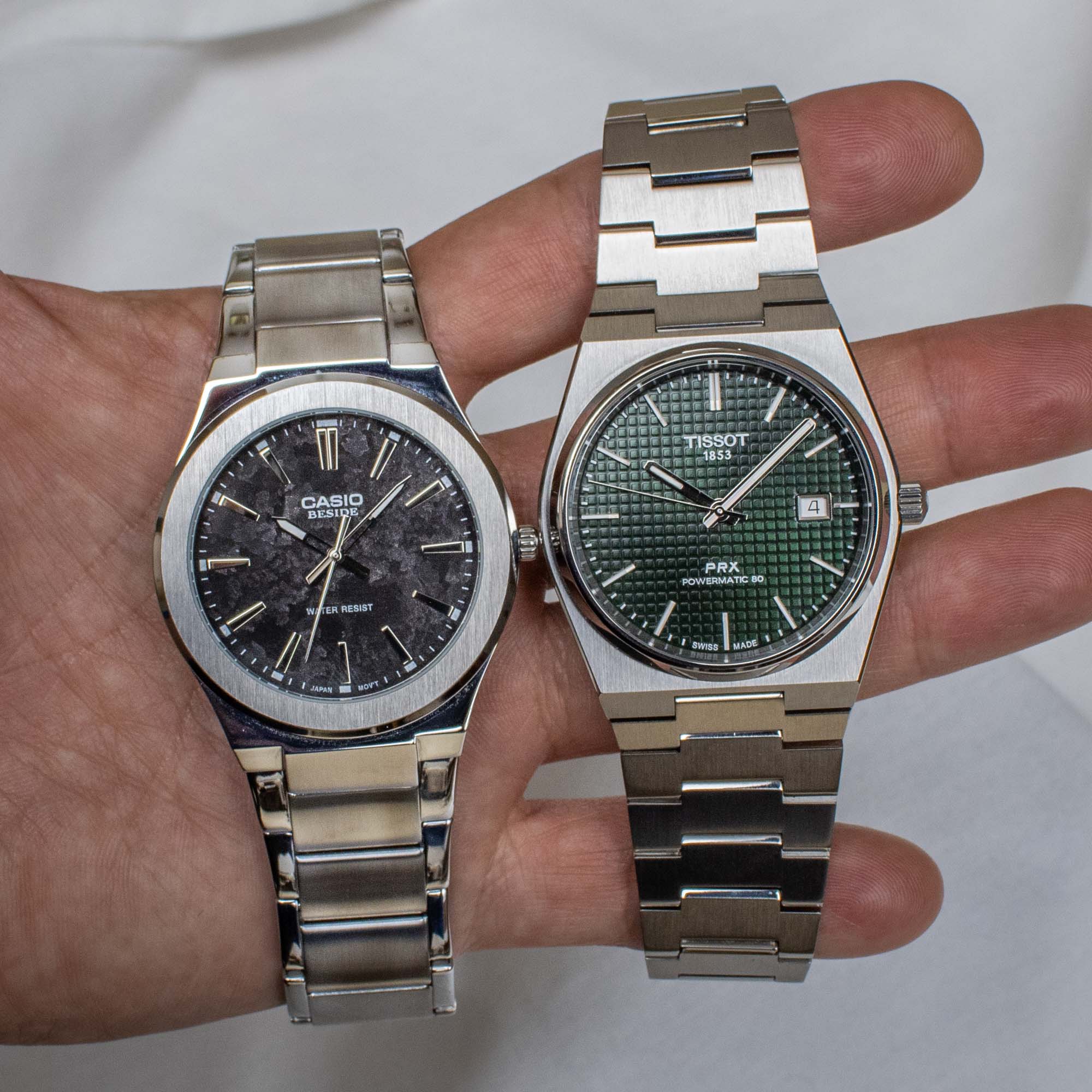
Aside from the ever-ubiquitous category of dive watches, arguably no genre of timepieces has captured the imagination of the collecting community more in recent years than the integrated bracelet watch. For many people outside of enthusiast circles, the overall appearance of a watch is inseparable from its strap or bracelet, and an integrated bracelet design creates a highly cohesive aesthetic that can allow a timepiece to be worn like jewelry. Although this style of watches experienced its initial wave of popularity back in the 1970s and 1980s, the massive notoriety of certain models such as the Royal Oak and Nautilus has brought an immense amount of attention to this aesthetic over the course of the last decade, and the industry is now packed full of numerous compelling options.
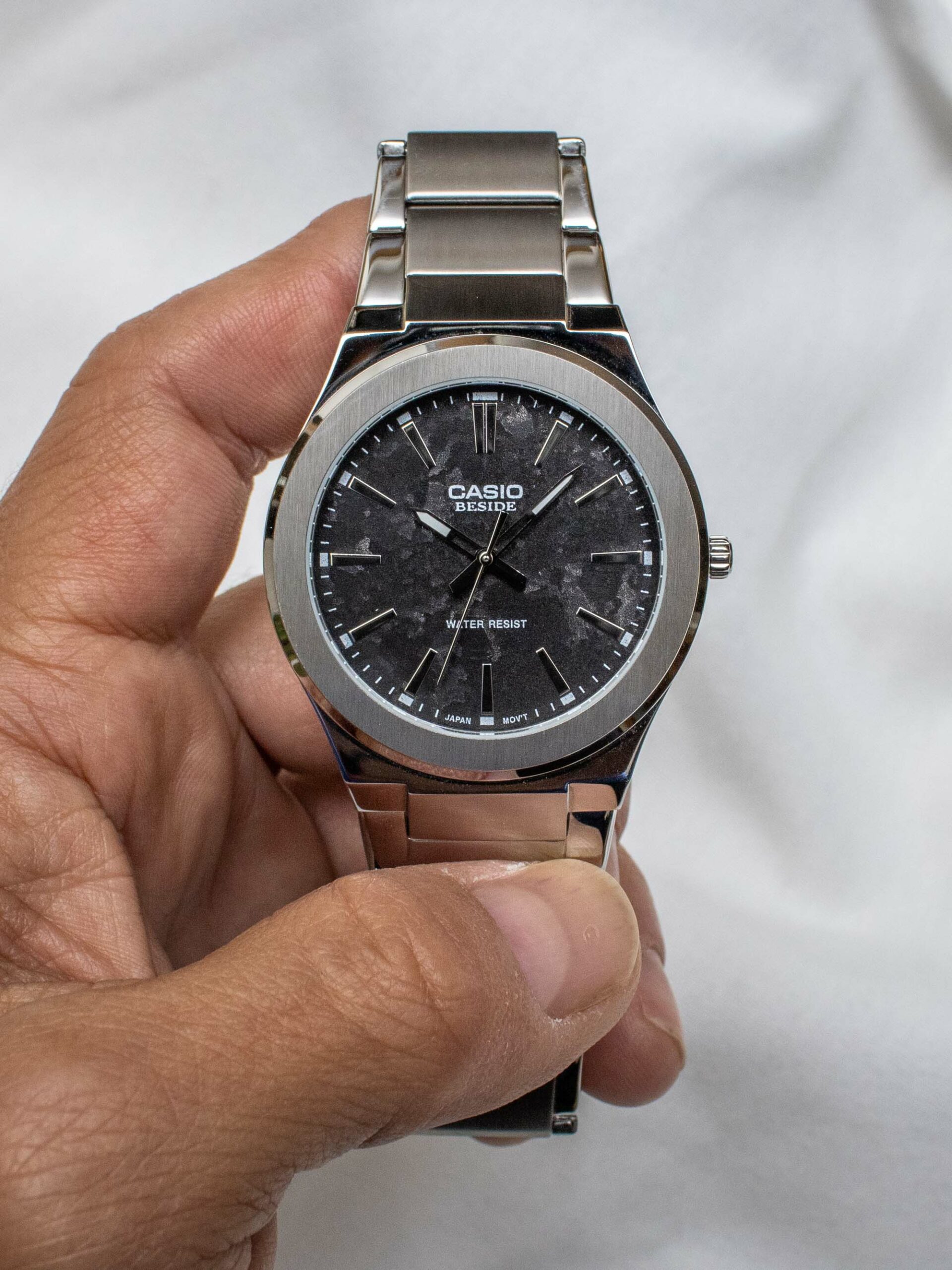
The only slight issue for those seeking an integrated bracelet watch at a budget-friendly price is that decent bracelets are neither cheap nor easy to produce. Aside from the fact that design and proportions are directly related to their comfort and overall wearing experience, bracelets also consist of numerous metal components that all must work together in order to create an ergonomic fit on the wrist, and they also must uphold a standard of finishing that is consistent with the rest of the watch. The clasp alone is a multi-component mechanism that owners will interact with on a daily basis, and in addition to performing its intended function and standing up to years of wear, a clasp must also look good and be sized proportionally for the rest of the bracelet. A big part of the reason why so many brands copy the core designs of existing bracelet styles is because designing a completely new bracelet with widespread appeal is even more difficult than producing a good one at an affordable price.
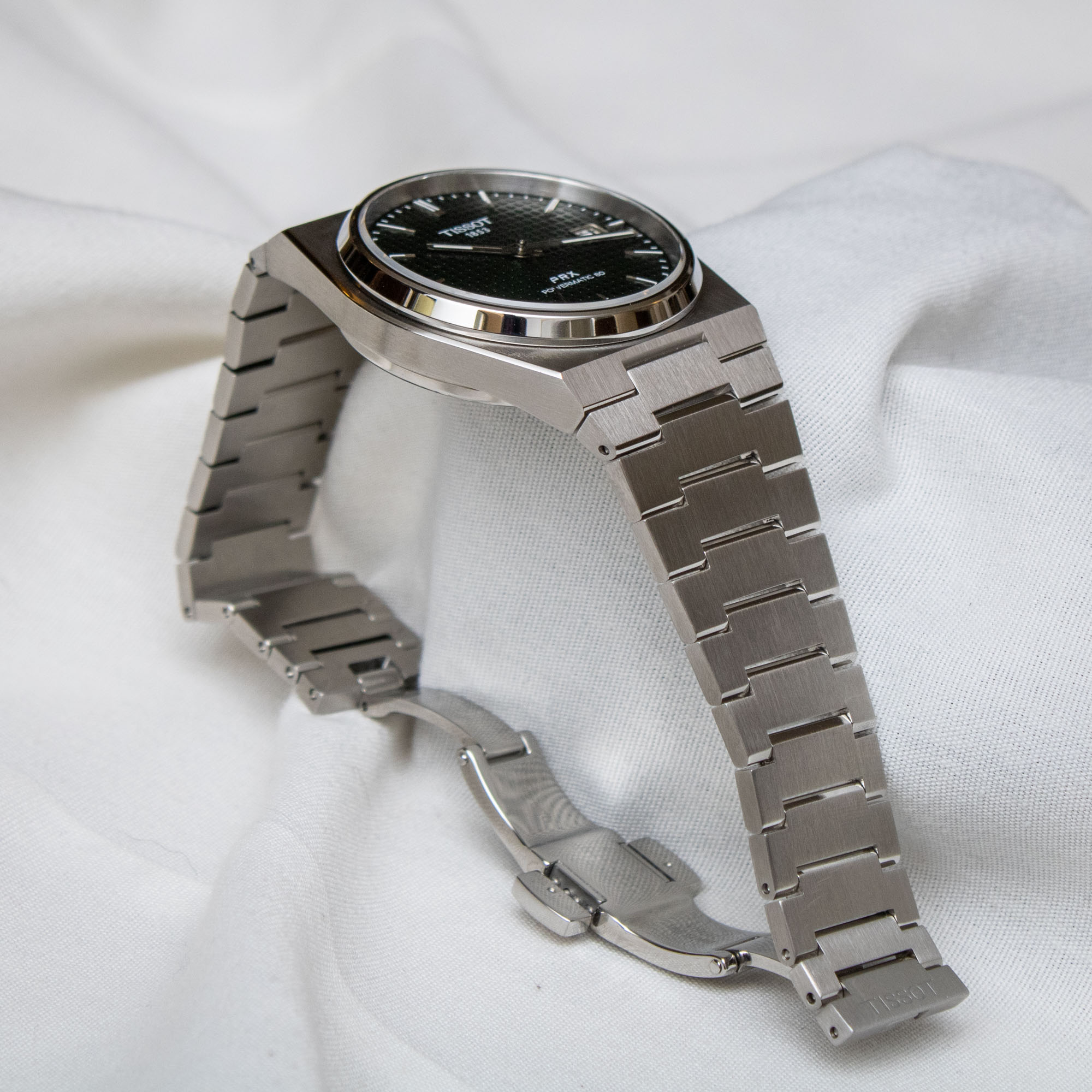
While you will certainly find some value-packed integrated bracelet watches from a handful of small-scale independent brands (Arken, Brew, and Dumoreau are just a few that come to mind), the microbrand side of the industry is often characterized by fleeting inventory and limited editions, meaning that getting your hands on the exact model you want isn’t always as easy as going online and placing an order or stopping by a local retailer. When it comes to the bigger brands, certain economies of scale are often needed in order to produce an integrated bracelet watch at an affordable price, and among the big-name companies currently operating within this space, Tissot is generally considered to be one of the top recommendations with its wildly successful PRX series, which was relaunched two years ago and revives one of the brand’s integrated bracelet watches from 1978.
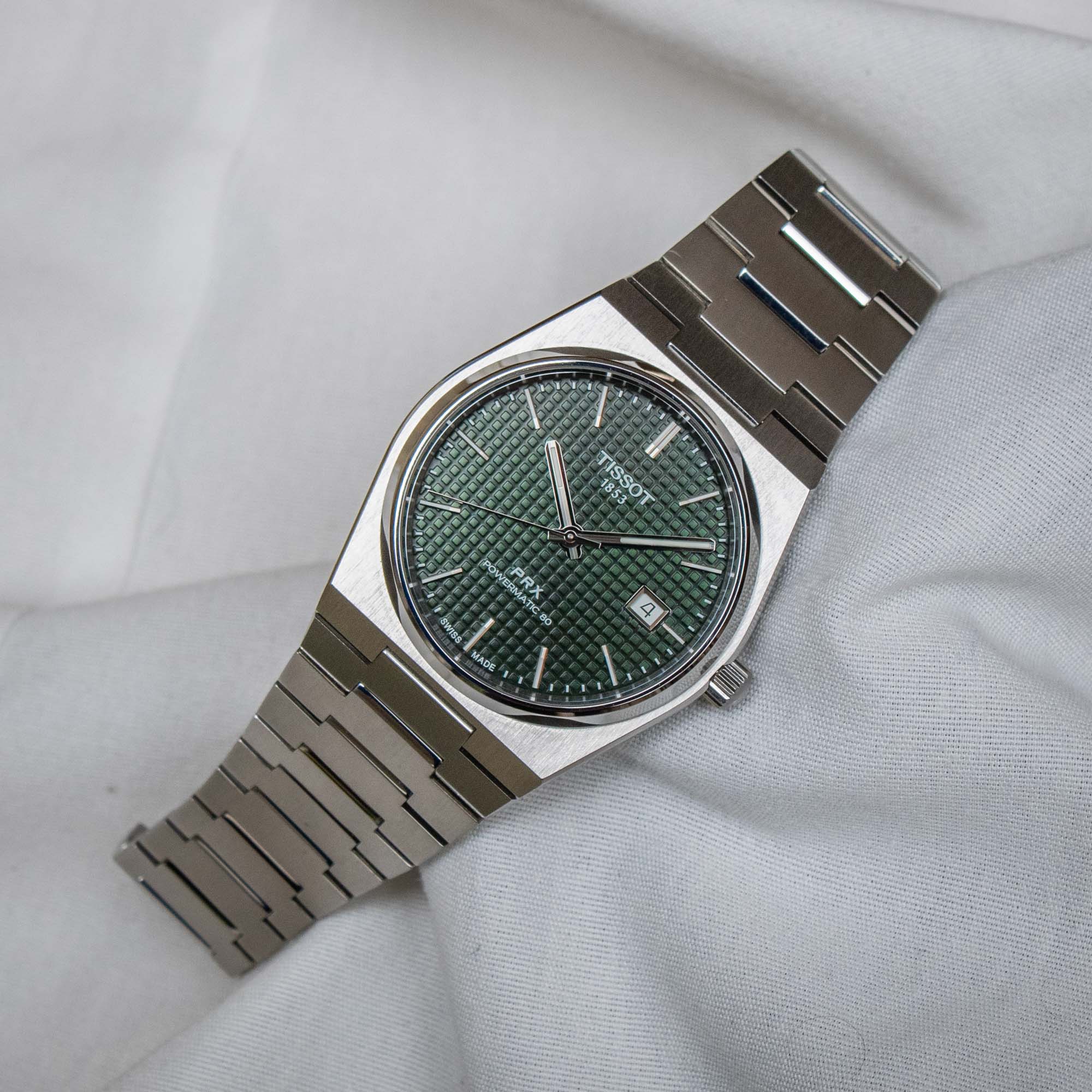
In the years since making its reappearance, the modern Tissot PRX series has expanded to include both three-hand and chronograph models, along with the option of either quartz or automatic movements. Additionally, the time-and-date models now offer the option of either 35mm or 40mm cases (the chronograph measures 42mm), and buyers also have their choice between a number of different dial colors and configurations. With that in mind, the fan-favorite model from the current series (and the watch featured here), is the 40mm version of the Tissot PRX Powermatic 80, which is the full-size time-and-date model that is powered by an automatic movement. While Tissot also now offers this watch with the option of a gold bezel and with the choice of leather or rubber straps, it is the classic stainless steel version on a matching bracelet that will likely be most appealing to collectors who want a high-quality integrated bracelet watch for a relatively attainable price.
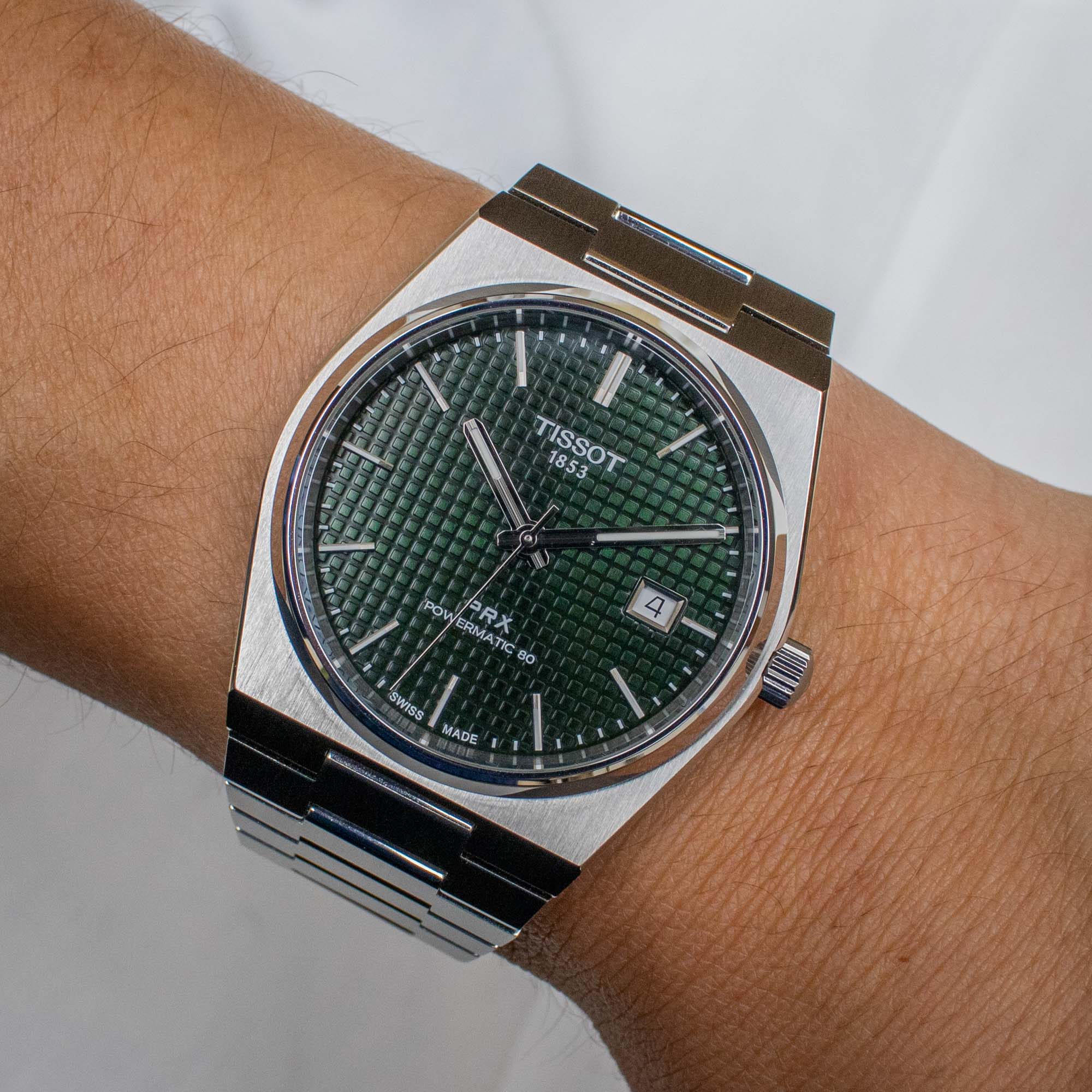
We have covered the Tissot PRX extensively over the years, and if you want a dedicated review of the Powermatic 80 variant, you can find it right here. In short, you get a 40mm stainless steel case fitted with a flat sapphire crystal, a signed push-pull crown, and a snap-on caseback that features a sapphire display window with a water resistance rating of 100 meters. While Tissot lists the official case thickness as 10.9mm, you are really looking at closer to 11.3mm once you factor in the additional height of the two crystals that slightly stick up above the rim of the bezel and caseback. Similarly, while Tissot lists the case “length” as 39.5mm, that on-paper dimension does not include the lugs, and the lug-to-lug profile of the case comes in at 44.5mm with the actual “length” of the watch measuring approximately 51.8mm if you count the way that the end-links stick out past the edges of the case. With that in mind, those with smaller wrists will still have ample options available among the 35mm models within the Tissot PRX lineup.
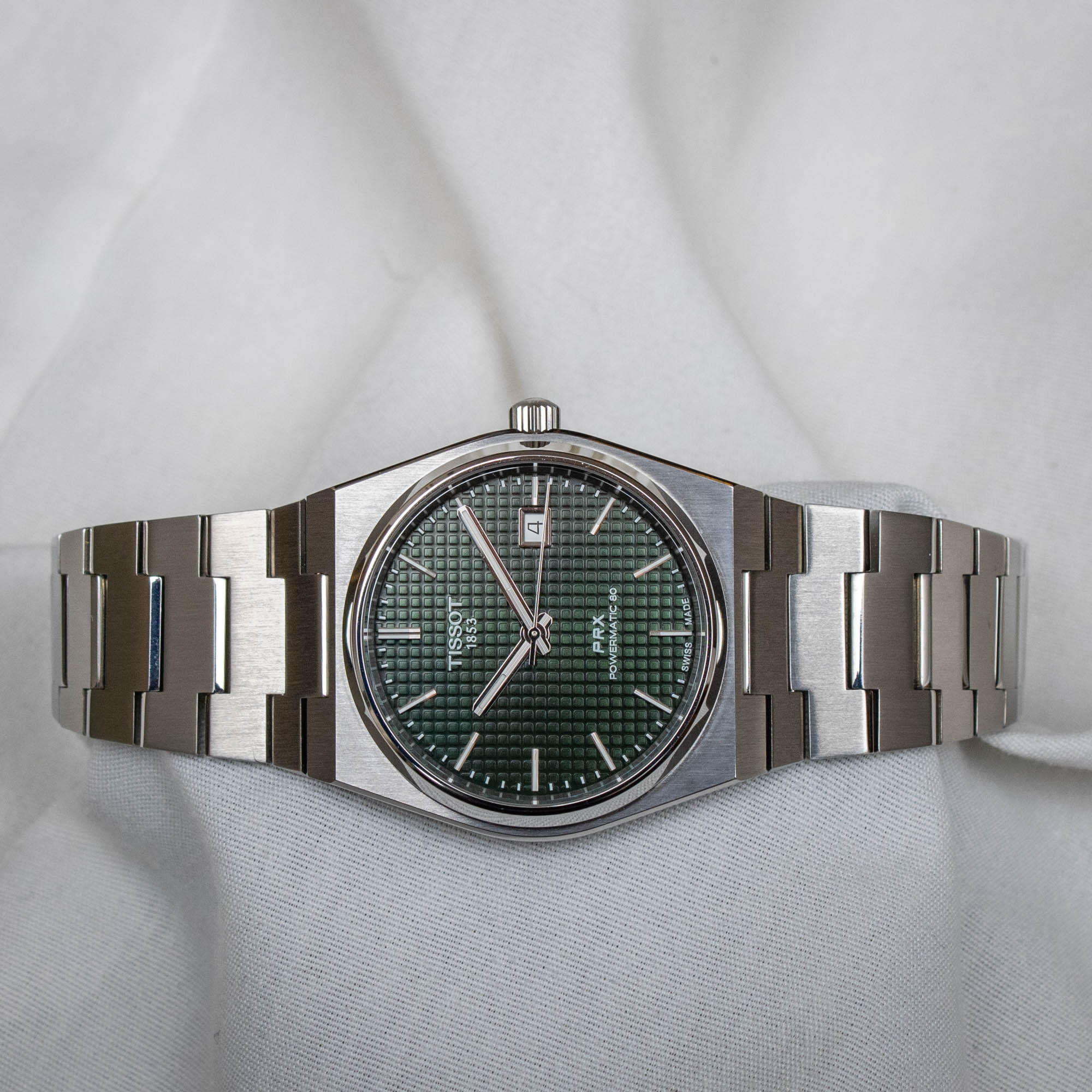
Although the Tissot PRX bracelet isn’t entirely perfect, it ultimately leaves relatively little to be desired when you consider its price point. While the bracelet connects to the case with 12mm semi-integrated lugs, the end-links flare out to 27mm in order to meet the edges of the case before tapering back down to 18mm where they attach to its butterfly-style folding clasp. The bracelet features an entirely solid-link construction, although the removable links are secured by friction-fit pins, rather than screws like on more premium watches. Additionally, while the clasp doesn’t feature any type of built-in extension system, the bracelet does include a pair of half-links that help users center the clasp and achieve a more comfortable fit on the wrist. While most Tissot PRX owners will likely wear their watches on the included bracelet, the end links connect to the case with quick-release spring bars, meaning that the bracelet can easily be swapped out for a strap, should you ever seek some variety.
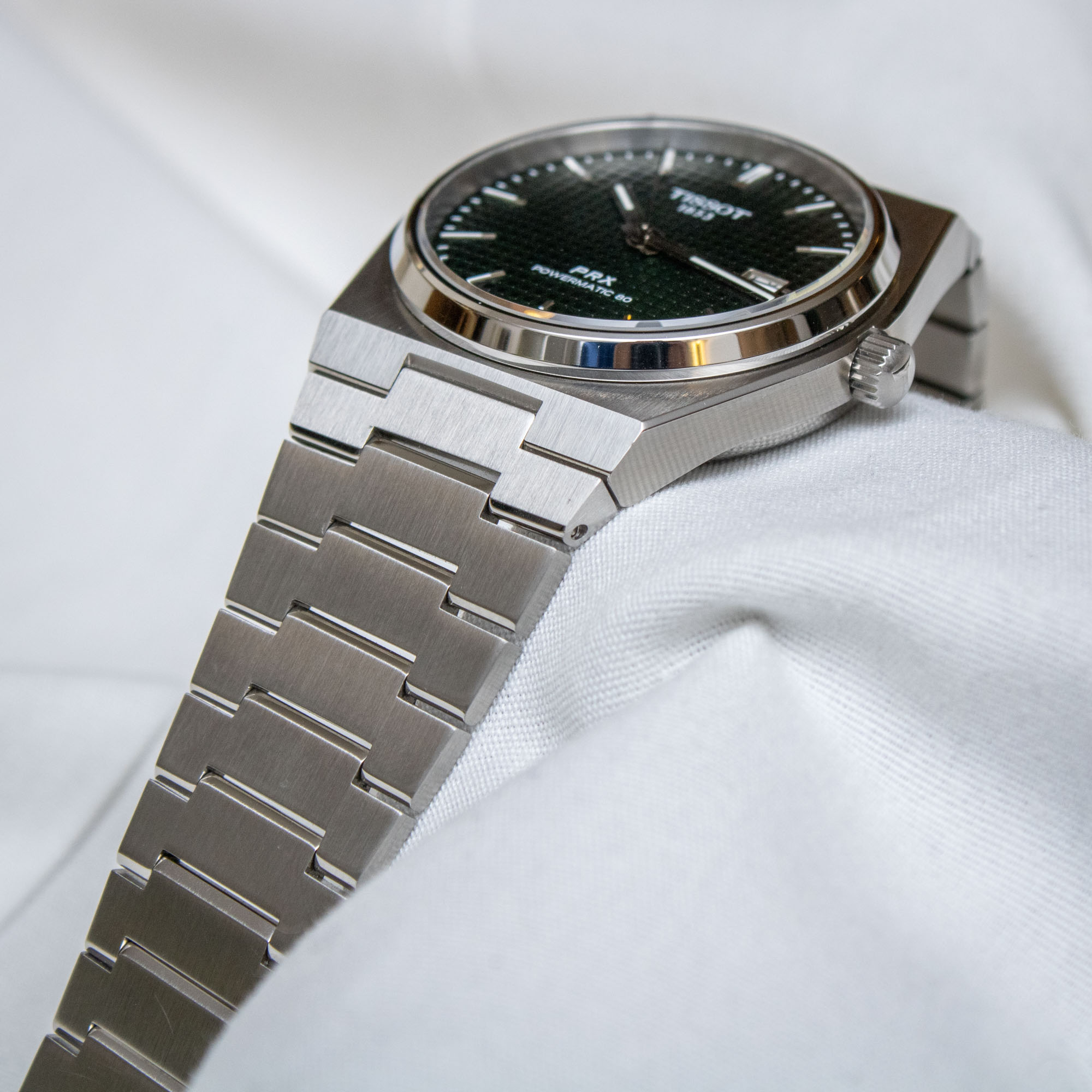
While the Powermatic 80 versions of the Tissot PRX cost a bit more than the entry-level quartz models, they are powered by Swiss-made automatic movements and represent some of the strongest value propositions within the greater PRX series. The Tissot Powermatic 80 movement is essentially an upgraded version of the venerable ETA 2824 that lowers the frequency from 28,800vph to 21,600vph in order to achieve an extended power reserve of approximately 80 hours. Although some configurations are not yet available for the Powermatic 80 models, the stainless steel version is currently offered with the choice of either black, dark blue, green, or ice blue dials, with each one featuring a Clous de Paris pattern embossed into its surface. While the Powermatic 80 variants might not be the absolute least-expensive options from the Tissot PRX lineup, they are easily some of the most compelling, as they deliver a well-made integrated bracelet with a Swiss automatic movement for what is still very much an attainable price.
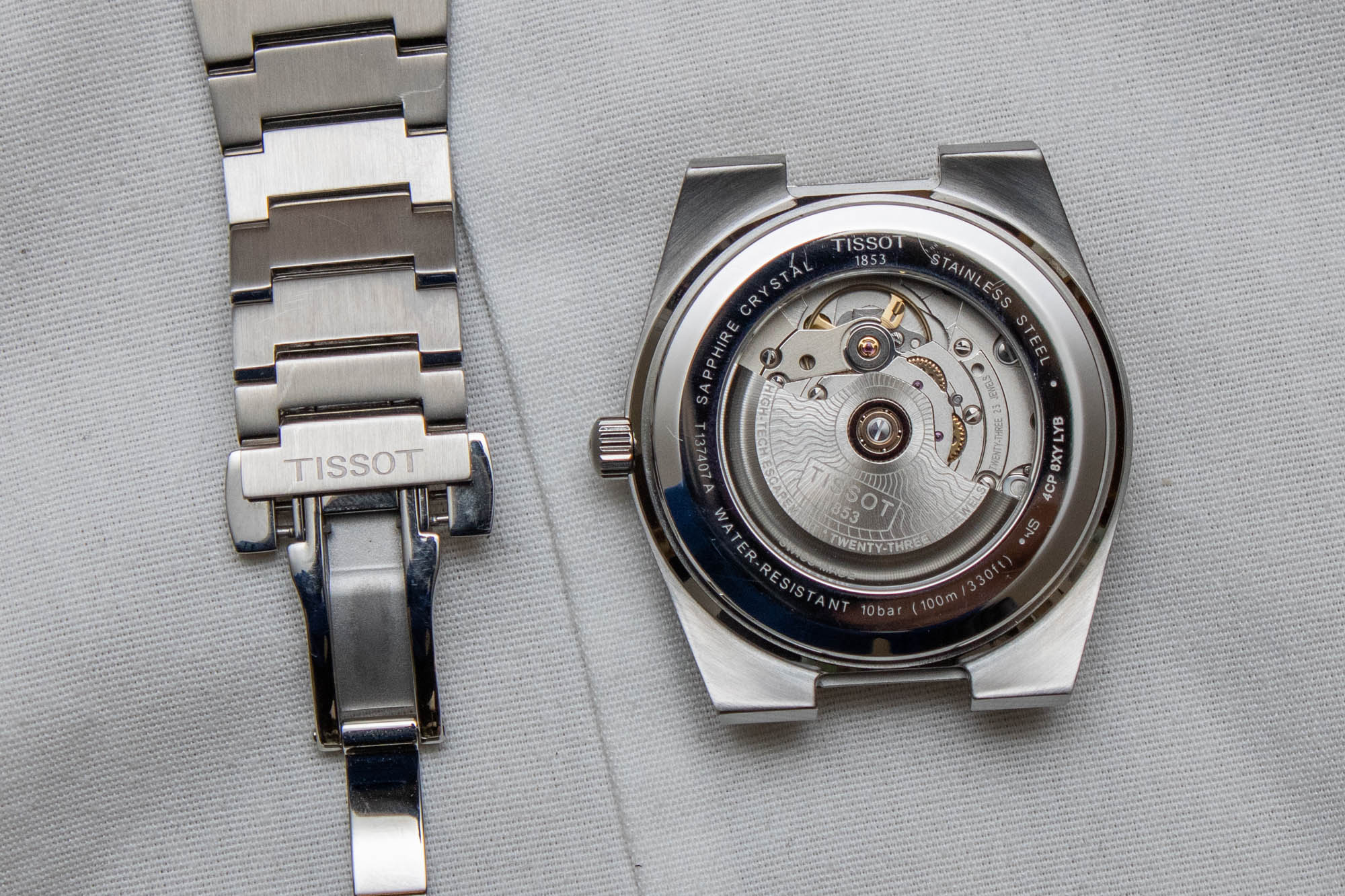
While the Powermatic 80 models might be the most appealing options from the greater Tissot PRX series, the quartz-powered versions can be found for almost half the price of their automatic siblings, and they should easily be the go-to option if the Powermatic 80 lineup is a bit outside your budget. That said, if this is still a bit too expensive and you really want an integrated bracelet watch for a rock-bottom price, Casio likely has something that will make you happy for less than the price of a new pair of sneakers. While Casio is probably best-known for its G-Shock series and its ultra-affordable digital watches, the brand also produces other entry-level timepieces with analog displays and significantly more traditional designs. Although an integrated bracelet watch from one of Casio’s entry-level collections isn’t going to provide you with something that feels luxurious, it will give you access to this particular style in a fun and care-free package from a brand that is universally loved and respected by enthusiasts.
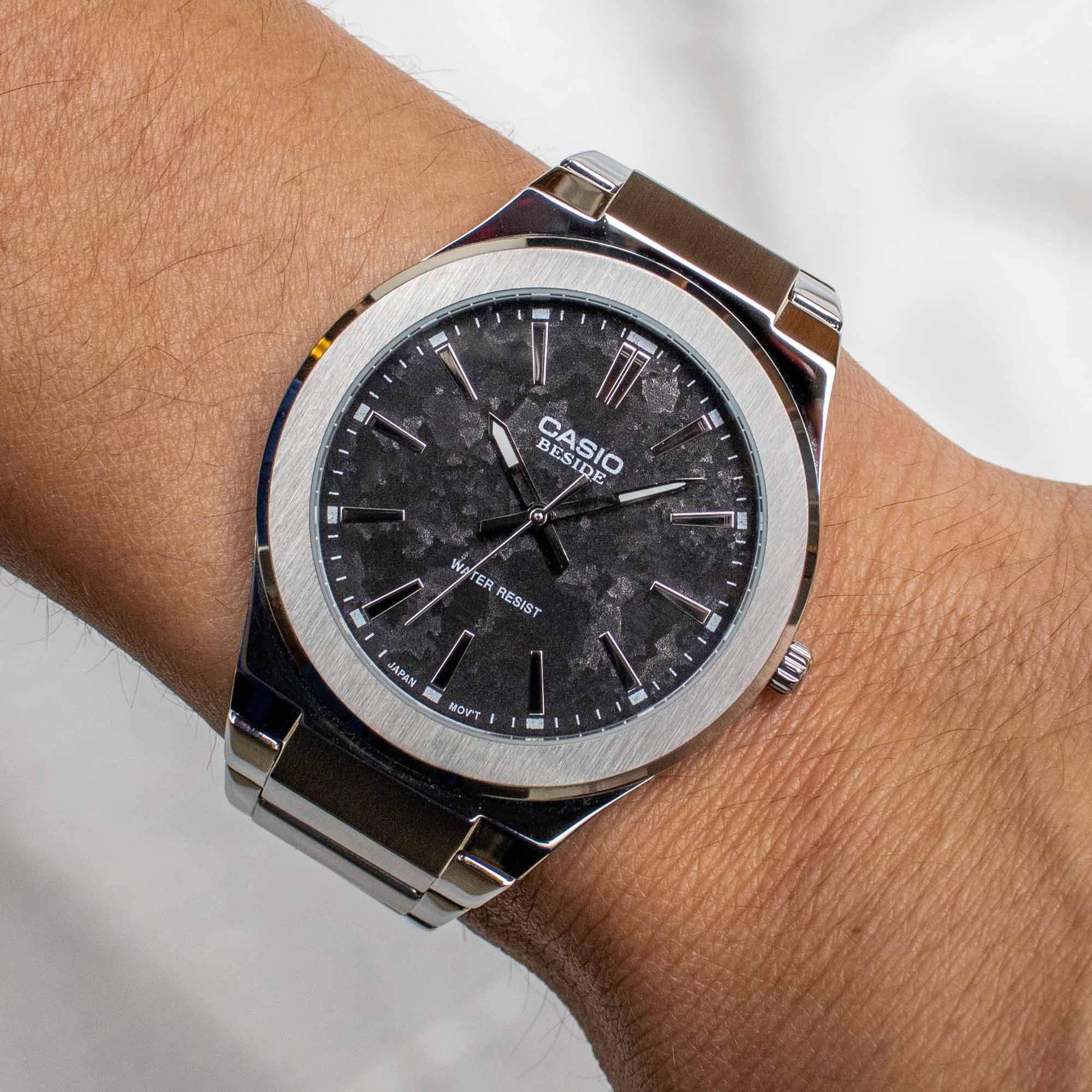
Compared to Casio’s near-endless assortment of affordable digital models, its options for budget-friendly analog watches with integrated bracelets are comparatively limited. However, one of the nice things about a huge international brand like Casio and the modern days of the internet is that with a little bit of searching (or simply looking on a site such as eBay), you can access some of Casio’s various other lines of watches that are intended for regional markets around the globe and not typically sold by retailers in your home country. While you might end up paying slightly more due to shipping or currency conversion, this approach can also significantly expand the number of available options and unlock some truly unique designs. Provided that you don’t mind doing a little bit of searching to find an example at a fair price, my top recommendation for a bottom-dollar integrated bracelet watch is the Casio Beside BEM-SL100D, which offers aesthetic notes of Zenith, Hublot, Patek Philippe, and Grand Seiko, but for a price that is more in-line with an entry-level model from Casio’s G-Shock lineup.
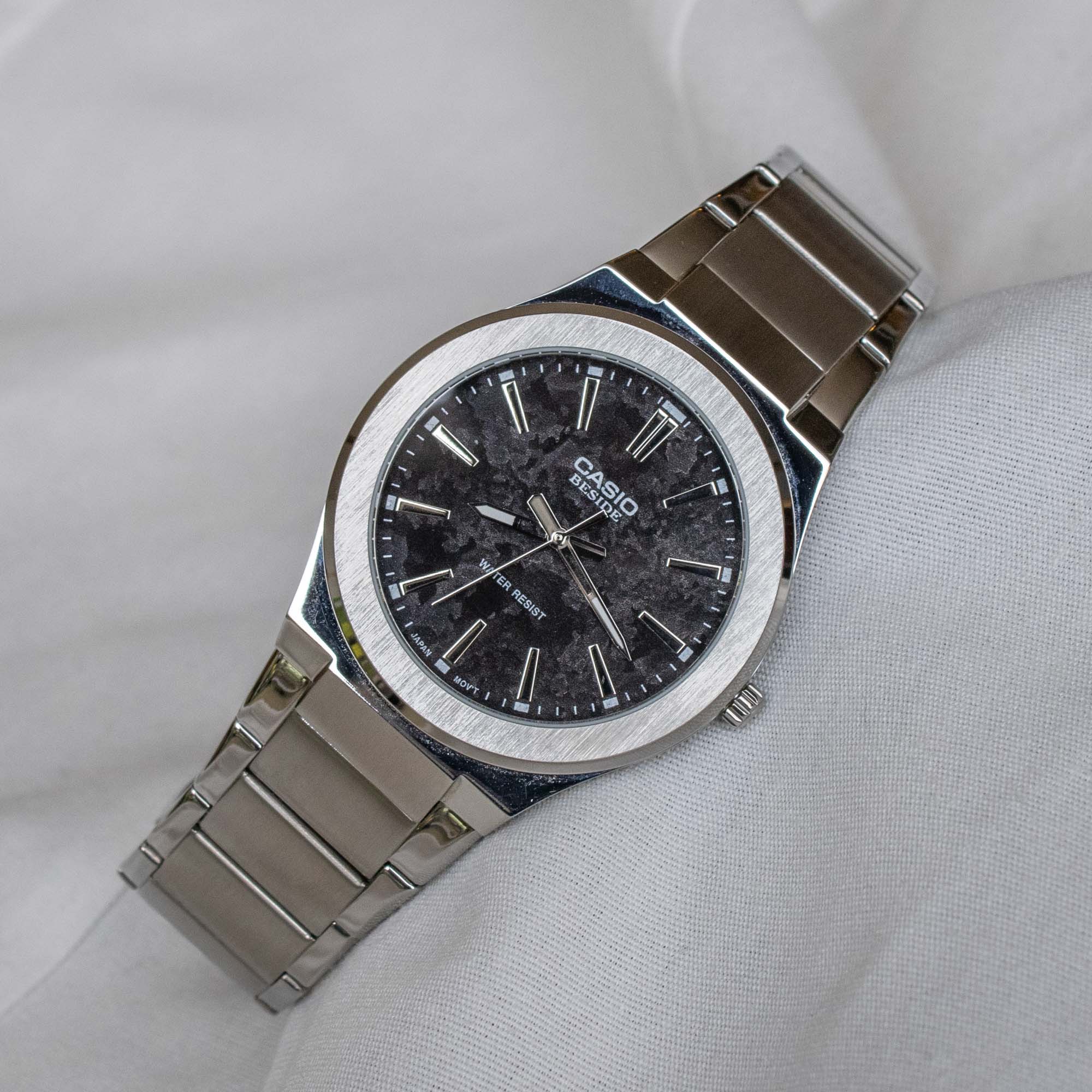
Information on the Casio Beside collection is minimal, and from what I understand, it is also no longer in production, although that may just be due to its lack of availability in the United States. Based on what I can gather, the Casio Beside series was created to be an affordable line of dress watches that were primarily intended for Eastern markets. As for the Casio Beside BEM-SL100D, the watch features a stainless steel case that measures 40mm in diameter by 7mm-thick, and it is fitted with a flat mineral glass crystal, an unsigned push-pull crown, and a solid screw-down caseback. Powering the watch is the Miyota 9T33 movement, which runs on a single SR616SW battery, while water resistance comes in at 30 meters to protect against incidental contact. Due to the way that the middle case incorporates the first center links of the bracelet, the overall lug-to-lug profile of the Beside BEM-SL100D comes in at 52mm, although the watch itself wears slightly smaller than the 40mm Tissot PRX due to its thinner shape and the way that the sides of the case slightly curve inward to meet the bracelet.
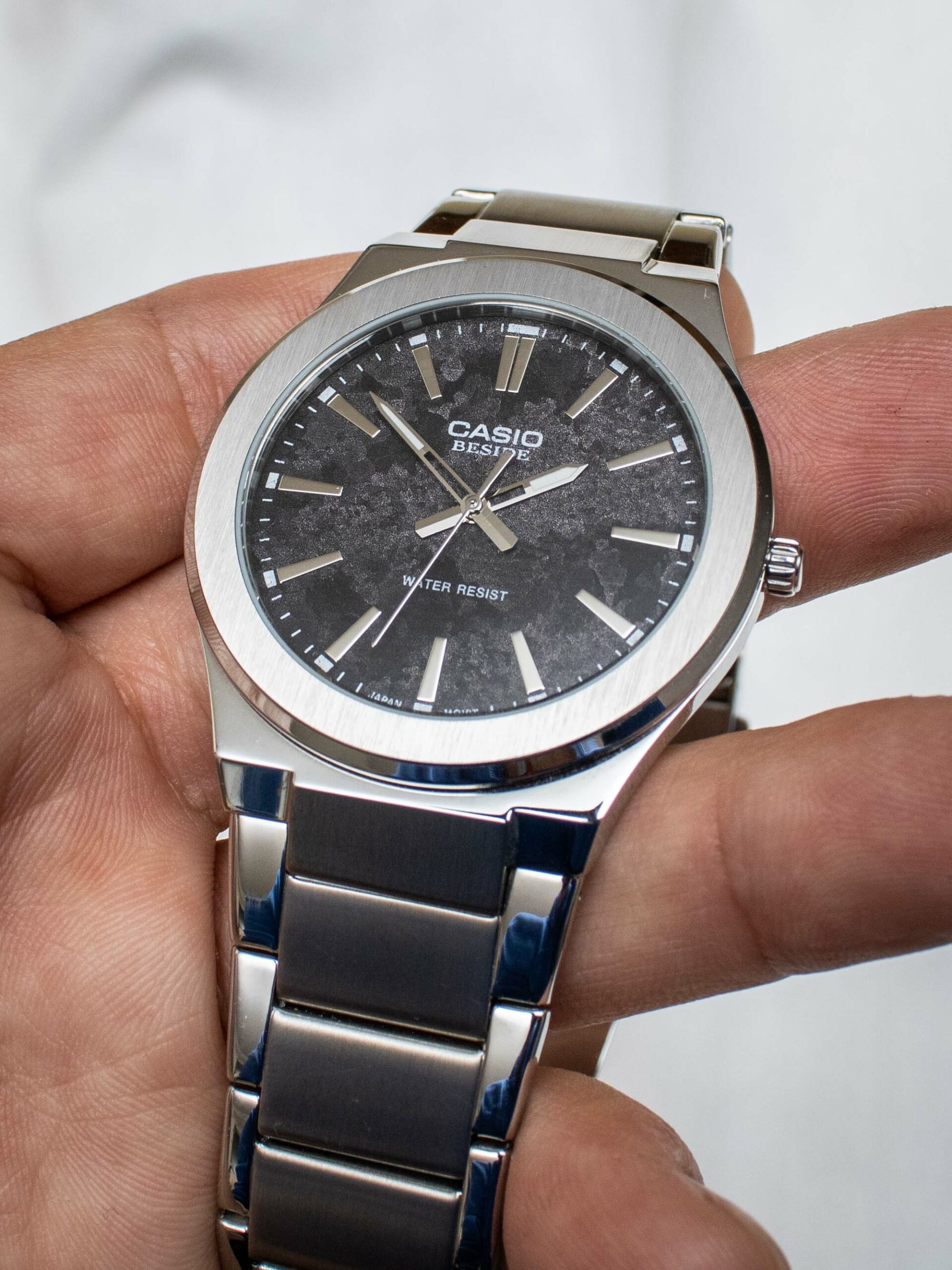
With linear brushing on the bezel and polished surfaces throughout the rest of the case, the finishing on the Casio Beside BEM-SL100D is a step above what you normally associate with Casio watches, although it’s still far below what you get from the Tissot PRX series. Additionally, the bracelet links are made from folded steel rather than solid, which immediately results in a less premium overall feel. However, the links are constructed in such a way as to keep their seams on the internal sides, so they have the appearance of being solid and are also far less likely to pull arm hair due to their completely smooth surfaces. The bracelet tapers from 24mm at the lugs down to 20mm where it connects to the clasp, while the clasp itself is a simple piece stamped stainless steel, although it still features a double push-button release with two holes of micro-adjustment to help achieve a better fit on the wrist.
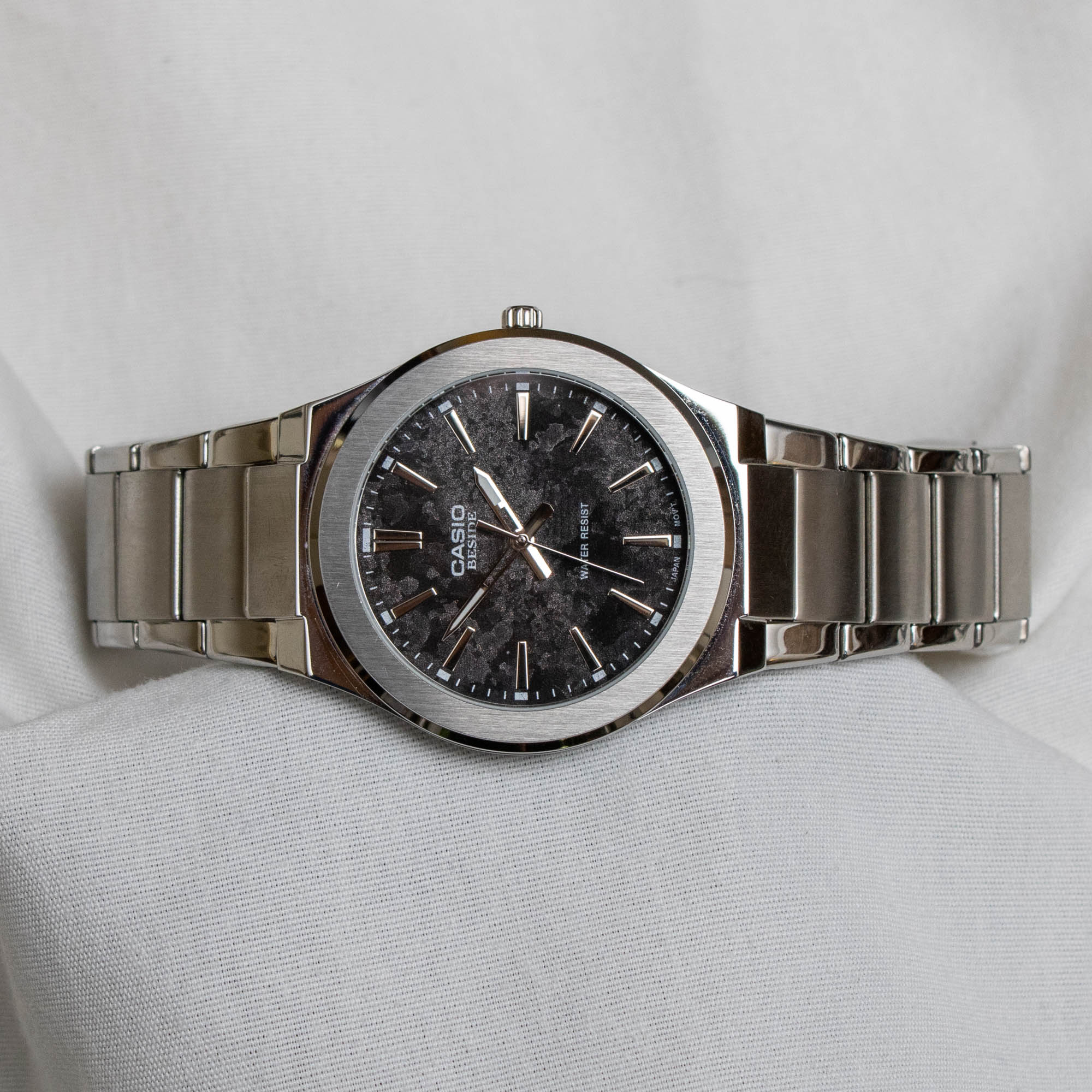
The Casio Beside BEM-SL100D can be found with a handful of different dial colors, including blue, green, brown, and black, the latter of which is the model featured here that is officially known as the BEM-SL100D-1ADF. Aside from their colors, all of the dials fitted to the Casio Beside BEM-SL100D series feature the same design, with an asymmetric texture that almost looks like meteorite or cut stone. The raised hour markers are embossed from the reverse side of the dial (rather than being applied), the minute hand is severely undersized, the dial printing is so patchy that I’m almost certain the aesthetic is intentional, and while the overall feel of the Beside BEM-SL100D is not even remotely close to that of a luxury watch, this particular model still looks quite a bit more expensive than its entry-level price would suggest. Additionally, due to its rather obscure nature and limited availability, the Casio Beside BEM-SL100D ultimately makes for a significantly more compelling conversation starter compared to a highly popular option like one of the models from the Tissot PRX series.
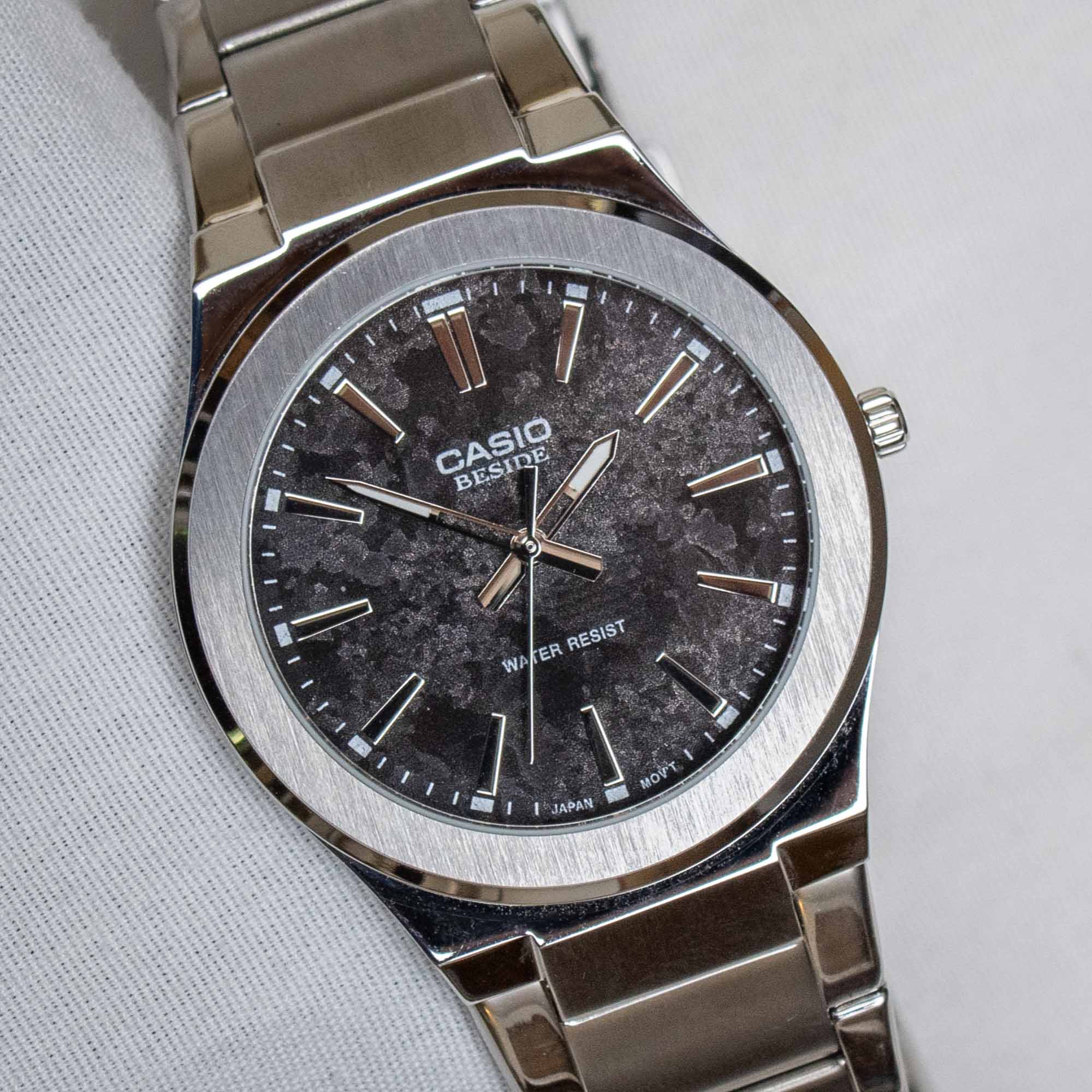
Prices for the time-and-date versions of the Tissot PRX can range from $350 USD to $675 USD, although you should plan on paying close to the higher end of that if you want one of the models that features the Powermatic 80 movement. Meanwhile, the Casio Beside BEM-SL100D should cost you somewhere in the neighborhood of $120 USD, but due to its limited availability and cult-like following, it is not uncommon to find certain third-party sellers trying to get anywhere between two and four times its official retail price. That said, the Casio Beside BEM-SL100D simply isn’t a watch that should be worth several hundred dollars, and if you are working with that type of budget, I’d recommend just getting yourself one of the quartz models from the Tissot PRX lineup. While the nature of a metal bracelet creates somewhat of a price floor when it comes to options that deliver a premium feel on the wrist, the popularity of this genre of timepieces has brought it far outside the luxury segment, and it is now possible to get an integrated bracelet watch that delivers a satisfying ownership experience at nearly any possible price point. For more information on the Tissot PRX Powermatic 80 or the Casio Beside BEM-SL100D, please visit either the Tissot website or Casio website, respectively.

